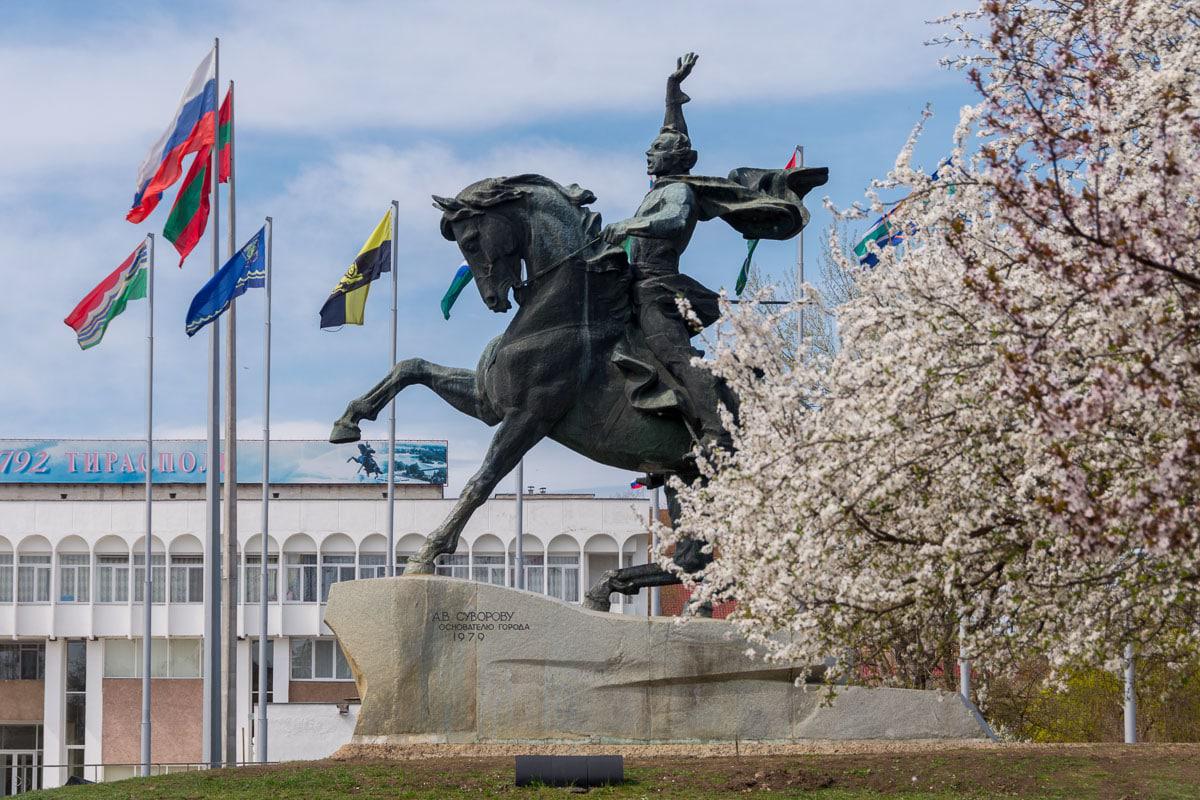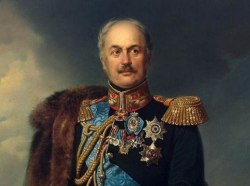Tiraspol, November 24. /Novosti Pridnestrovya/. Today is the 290th anniversary of the birth of the greatest Russian military leader, one of the founding fathers of Tiraspol Alexander Suvorov (1730-1800). In Pridnestrovie his image is closely intertwined with the history of the country. In the center of the Pridnestrovian capital, there is a the best in the USSR monument to Suvorov. The main square of Tiraspol is named after him; the portrait of the commander is on the banknotes of the PMR. A lot has been written about Suvorov’s life, his rules and legendary military successes. We will briefly describe why in Pridnestrovie Alexander Vasilievich is a historical symbol.
Contributed to the adjunction of Pridnestrovie to Russia
Pridnestrovie became part of Russia, following the results of the Treaty of Jassy with the Ottoman Empire, concluded on January 9, 1792. The treaty assigned to Russia the entire Northern Black Sea region, including the Crimea, and designated the borders between empires along the Dniester River. The signing of the peace agreement was largely facilitated by the victories on the battlefield won by General Suvorov.
He surprised the whole of Europe, winning two battles with a numerically superior enemy: at Focsani and Rymniс.
For the art of fighting “not by number, but by skill”, he became the owner of the personalized golden sword with diamonds “To the winner of the vizier”, the Order of St. George the Victorious of the 1st degree and the earlship with the title of Suvorov-Rymniсsky. Another fantastic victory was the capture of the strong fortress of Izmail in winter conditions. This was just the case, when the impossible turned out to be possible.
Thanks to these successes, peace negotiations began, in which Turkey couldn’t but reckon with such factor as Suvorov. In Istanbul they also remembered the last Russian-Turkish war of 1768-74, when the “Northern Scythian”, as the French later called Suvorov, crushed the janissaries in the Balkans. They also didn’t forget the brave actions of the general in the Crimea, where in 1778 he led a group of “polite people” in order to prevent the Turkish invasion of the peninsula.
Strengthened the Russian border along the Dniester
After The treaty of Jassy, the strengthening of the new border began. Yekaterinoslavsky governor Vasily Kakhovsky organized the exploring of new territories and presented a plan for the construction of the Dniester line. One of its authors is Franz de Volan, a Dutch engineer in Russian service. The latter drew up a plan for the construction of the Sredinnaya fortress (the main fortress of the Dniester line) around which the city of Tiraspol would eventually grow.
But Empress Catherine the Great assigned Suvorov to inspect the construction of fortresses. Firstly, the general had invaluable experience in organizing military infrastructure. He began his military career as an administrator of logistics. This post one of the most important aspects of the war. Suvorov was also involved in strengthening the border with Sweden and the southern border on the Kuban River.
Secondly, Catherine II understood, that a new war with Turkey was inevitable. Istanbul was pushed towards it by the European powers, dissatisfied with the strengthening of Russia in the Northern Black Sea region. And the popularity of Suvorov after the resounding victories at Rymniс, Foсsani and Izmail was at its high, the personality of the general made a deep psychological impression, including on enemies. The arrival of the “the Turks’ terror” at the new western border of the empire was filled with deep symbolic meaning. According to the secret rescript of the Empress, Suvorov was supposed to inspect the shores and borders and report on the measures “how to bring them into readiness against an unexpected enemy attack.”
The dispatch of Alexander Khvostov the Russian resident in Istanbul, whose tasks were including to prevent a new war with the Ottoman Empire, speaks of Suvorov’s peacekeeping capabilities.
“One rumor about your being at the borders made me feel better in affairs and a great impression on Porta (Turkey); only your name has a strong reflection of all the instigations, which from the side of the plotters [meant France and England], who made obeisance to the Porta to loggerheads with us.”
To stop hostile intentions: if you look closely, such a semantic hypertext is read in the image of the equestrian figure of Suvorov by brothers Artamonov. In the center of Tiraspol, a Russian general, standing up on the stirrups, with a gesture of his hand seemed to warn those, who are walking on the right side of the Dniester territory, subjected to Turkey at the end of the 18th century.
One of the founders of Tiraspol
The Sredinnaya fortress, around which the future capital of the PMR grew over time, was founded by Suvorov personally. Informed researcher G. Timchenko-Ruban, who wrote the book “Suvorov and Engineering” in 1913, came to this conclusion after painstaking work with the documents.
Empress Catherine II on November 21 ordered Suvorov to take command of the troops in the future Novorossiya:
“Having assigned the command of your troops located in the Yekaterinoslav province, Taurida and in the newly acquired region, we are entrusting you with all the boundaries supposed for the safety of there and proved by us according to the designs of engineer major de Volan in different places of fortification to immediately bring to execution ...,” Empress’s rescript says.
In actual fact, Suvorov was commanded to accomplish already “proved projects” drawn up by engineer De Volan. But the general made significant adjustments to these plans. Suvorov changed the location of the Sredinnaya fortress. Initially, it was supposed to be located on the banks of the Dniester between the Ternovka sloboda and the Parcani village, opposite the modern Merenesti village. But Alexander Vasilyevich noted, that there is high wetness, which means, that the fortress garrison will suffer from diseases. Therefore, Suvorov insisted, that the fortress be raised to the second terrace above the flood-plain.
“The fortress of the main Depot must be located at the “mouth of the hollow” to the left bank of the Dniester, opposite the Botna river, which has a very vast plain and is convenient for crossing the Dniester river,” the general wrote to Petersburg.
According to Suvorov’s plan, the fortress was supposed to be the station “the most preferential and the most important on this border.”
By the summer of 1792, all the preparatory work had been completed. By the way, the general had to use his personal finances: material procurement went beyond the allocated budget, and in order not to delay the construction, Suvorov took out a loan by mortgaging his own estate. The expenses were then generously reimbursed by the Empress.
The general began building the fortress. Researcher G. Timchenko-Ruban accurately indicated the date of the foundation of the fortress:
“The Tiraspol fortress was personally founded by Suvorov on June 22, 1793 and, despite a number of extremely unfavorable conditions – its being in a completely uninhabited country, the involvement of unaccustomed to the meridional climate troops, the building was progressing with great success.”
Having launched the building, Suvorov went to Dubossary, which also became part of the Dniester line. Here the general spent several days, sending instructions and letters on command and control. In one of the local plot of land there is an old tree, which the locals call the Suvorov oak. According to foresters, it is over 200 years old.








